How do you solve these charging problems?
Unfortunately, it isn’t as easy as installing a second battery (which does solve part of the problem with more capacity). If you simply install a second battery without a battery management system attached to it, you could still find yourself stuck in the morning, with two drained batteries. There is where Dual Battery Systems come into play. A Dual Battery System will isolate the second (auxiliary) battery from the starter battery. This will ensure your starter battery always has enough power to start the car in the morning.
You might only need something as simple as the Smart Solenoid or smart battery isolator. These allow you to charge your second battery while you drive, while also protecting your starter battery from excessive discharge. If you’ve got fairly high power consumption, then you might want to look at another product called a DC to DC charger.
Charging Options for Dual Battery Systems
Dual battery systems used to be simple – you installed a 2nd battery, ran your accessories off it and wired in a switch to manually isolate it when the vehicle was off. Nowadays, things are little more complicated. There are a number of different ways to run your system.
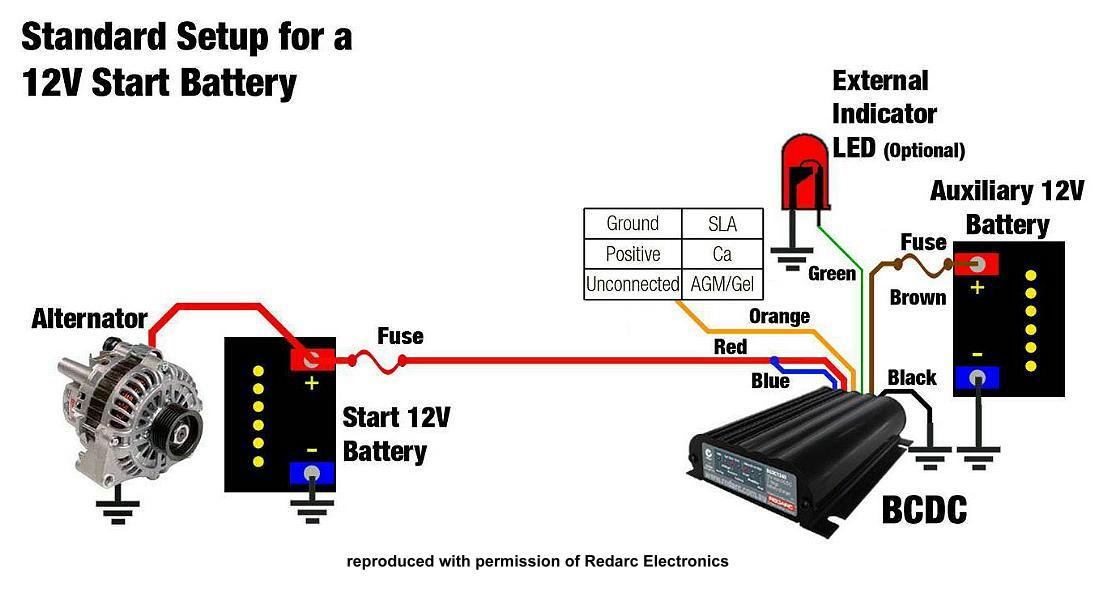
Basic Isolators
A basic isolator is similar to little manual switch which physically connects the two batteries together. But rather than be a switch you operate yourself, it’s controlled by the ignition. They’re super cheap and will effectively isolate your starter battery, meaning you can run your auxiliary battery flat. However, the let down with these is the now flat battery will connect as soon as you attempt to start your vehicle potentially leaving you without enough power to crank over.
Smart Isolators
It’s worth investing a little more and getting a smart isolator. They’re the same mechanical switch as the basic isolator but instead of turning on and off with the ignition they’re made to cut in and out at certain voltages. We usually recommend this as an entry level option for Dual Battery Systems. This means they’re able to keep the auxiliary battery disconnected until the starter battery is fully charged ensuring you’ll always have enough juice to get your vehicle going. Some Isolators even have the option of jumpstarting (link to jumpstart video when up) the starter battery off of the auxiliary battery. What a smart little isolator!
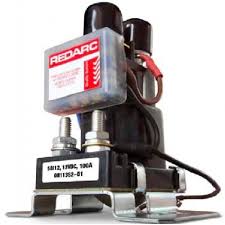
DC to DC Chargers
Some manufacturers are now designing their vehicles with smart alternators. To meet strict fuel consumption and emission targets these alternators put out just enough power to charge the main battery and turn off completely when it’s fully charged. This makes it almost impossible to charge an auxiliary battery by traditional methods. Cue, DC to DC chargers.
DC to DC chargers are effectively like a battery charger you’d have at home but they plug into the vehicles wiring. The ECU sees it as just another accessory like a pair of lights and will run the alternator accordingly. It basically makes two completely separate electrical systems so there is zero chance of running the main battery flat by keeping the fridge on all night. Some high-end units can also regulate solar panel input, act as a mains charger and even provide detailed info to the driver about battery conditions and charging rates.
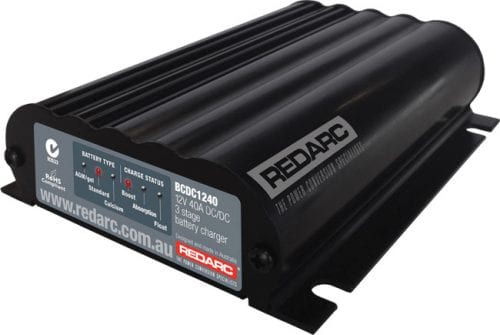
Battery Types
Just like charging methods, 12V batteries have also changed greatly over the years. There are options to suit all types of budgets and requirements, giving more flexibility when designing a dual battery system.
From increased energy capacity to weight savings to batteries safe enough to install inside passenger compartments there’s a whole lot more to battery technology than you may initially think.
The two major and clear distinctions are starting batteries and deep cycle. A starting battery is designed to give a quick burst of energy making it easier to start an engine. A deep cycle battery delivers less instant energy but has greater long-term energy and is designed for constant draining to near flat and re-charging, something a starting battery won’t cope with.
Other important differences come down to construction types.
Flooded Lead Acid Battery
Flooded Lead Acid Batteries are the oldest style of commonly used batteries. Also, the cheapest. If you were to crack open one you would find a series of lead plates filled with liquid acid. For safety, these must be mounted upright and away from passenger compartments. As they are not sealed, they can potentially also give off dangerous fumes. With that said, they can handle big short hits of power usage such as an engine starting. Making them the ideal starting battery.
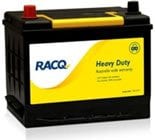
AGM (Absorbent Glass Mat)
The construction of AGM batteries makes them essentially leak-proof. This means they are safe to mount on any angle, in any configuration and inside passenger compartments if required. The lead plates found in conventional lead-acid batteries have been replaced with fibreglass mats sandwiched together in a sealed housing. They have a slow discharge rate so are safe to sit for a few weeks at a time without being charged. But they can not deal with intense loads such as starting, therefore, they make an ideal auxiliary battery.
Gel Cell
Gel cell batteries are the next step up from AGM batteries. The liquid acid is replaced with gel acid making them spill proof and maintenance free. Like the AGM battery, Gel Cell batteries can’t handle the intense load seen in starting.
Lithium
Lithium batteries are the small powerful batteries found in compact devices like phones and laptops. This technology is slowly starting to filter into vehicles and it’s predicted that they will eventually dominate the industry. Popular for their light weight and power they have replaced heavy lead, fibreglass matting and gels with a lightweight chemical. They’re the ultimate in weight saving battery technology at the moment.
For more info on Lithium take a look at the options available from our friends over at Enerdrive.
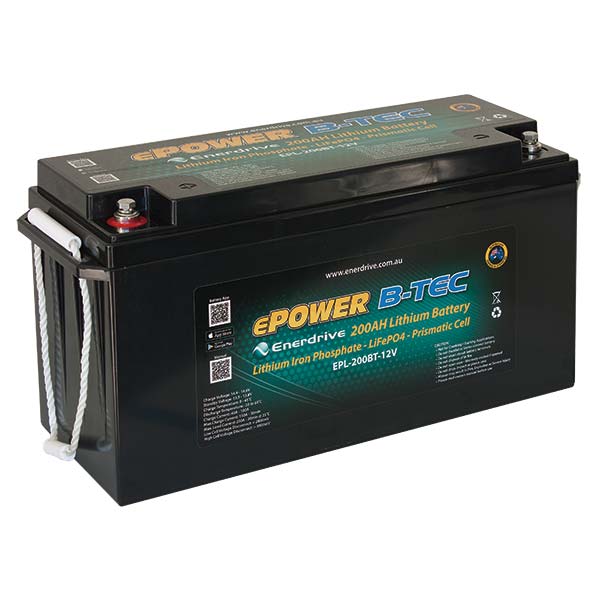
What to look for in a Dual Battery System
When designing your own dual battery system there are some things you’ll need to consider.
What can your vehicle run?
With many late models, you’re locked into running a DC to DC charger, unfortunately even if it’s not what you want.
What extra options would you like?
Do you want solar input or the ability to plug your vehicle into a wall at home to charge batteries?
Which battery do you require?
For most a simple lead acid battery under the bonnet and an AGM or Gel cell for the auxiliary will do. However, you will need to consider your mounting options and power usage. Batteries are rated in Amp hours – the amount of amps that can be provided in one hour. Or how many hours can a battery can provide one amp. For example, a 100AH battery can provide 1 amp for up to 100 hours, or 100amps for an hour.
Make your Battery Last
Batteries might seem like a set and forget component of your vehicle. It is important to take care and ensure your battery isn’t susceptible to vibrations, extreme heat or cold or external damage. As well as regularly checking for dirt, cracks and leaks can extend the life of your battery. If you run an unsealed lead-acid battery you’ll also need to maintain electrolyte levels by routinely topping up with distilled water.
We’re proud to boast we are the Sunshine Coast’s leading 12 volt Specialists and can help you will all your battery needs. Give us a call today on 1300 227 353 to discuss your dual system battery needs or pop into our store at 17 Trinder Avenue, Maroochydore.
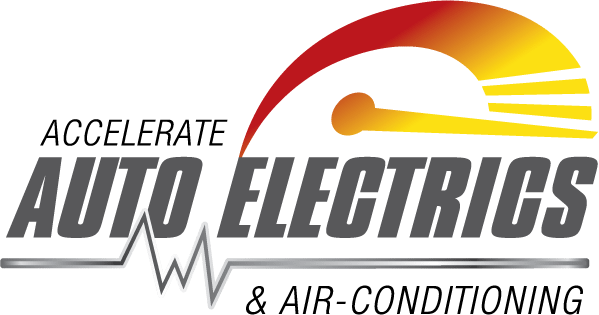
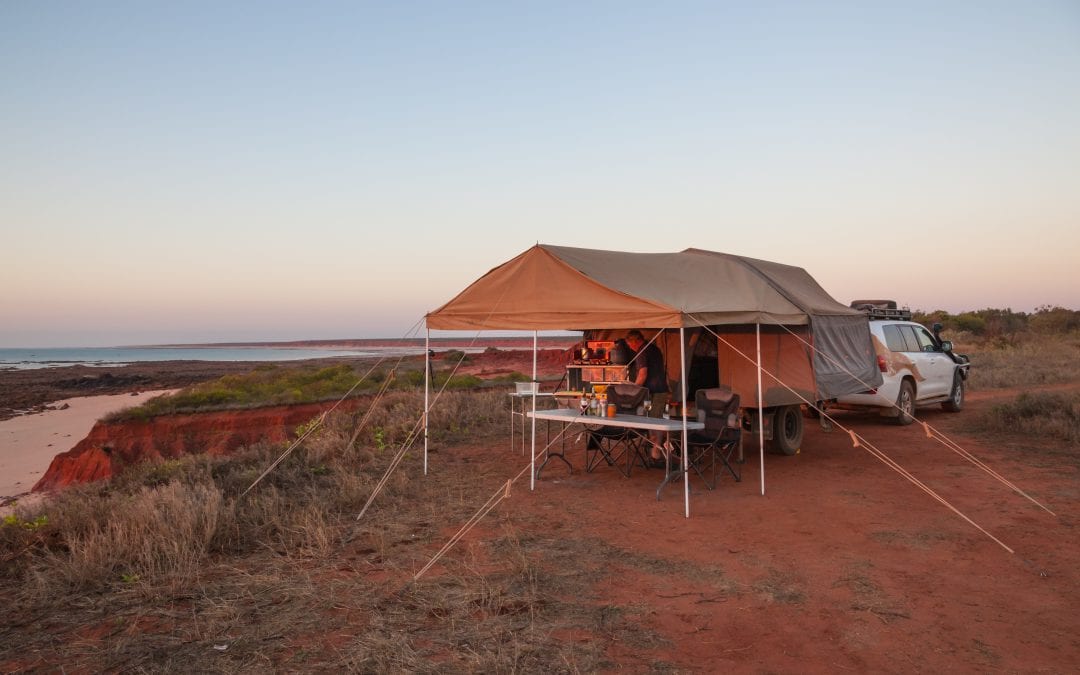

In some older vsr’s the second battery won’t disconnect as the voltage is too high, and cause issues when the vehicle is started how does the bc/dc charger go in these situations?
DCDC Chargers can be connected into the vehicles ignition circuit which tells the charger when the vehicle is on or off.
Hi, is the BCDC 1240D also an Isolator? If i have two AGM Batteries as Main and Aux on an 80 series , should i buy one to charge to 100% both batteries since the alternator wont charge AGM batteries to 100% and connect both batteries to 1240D?
Hi Mario, Yes to all of the above. The BCDC140D keeps your start and auxiliary batteries separate. It should charge your batteries correctly.
With a dual battery system in a Prado, what would your recommendation be for the setup.
1 – Have the main battery as a dual purpose deep cycle/cranking battery that powers everything and an aux battery that is isolated with a VSR to use to start the vehicle in case of a flat main battery.
2 – Have the main battery connected up as standard for starting/accessories and the second battery a deep cycle to run fridge lights etc which is isolated by a VSR.
Definitely option 2. Leave the start battery as is to run and start your vehicle.
We would recommend fitting an auxiliary battery under the bonnet to run all aftermarket accessories i.e fridge. We would also recommend using a DCDC charger over a VSR to ensure correct charging of the auxiliary battery. A VSR will only ever charge an auxiliary battery to 70%.
hi, does my auxiliary battery need to be the same amps as the car battery
Hi there! Your auxiliary battery can be of any size as long as it has the correct charging systems in place. You are usually limited to space depending on the vehicle for under bonnet dual battery systems. Commonly the biggest you can get under a bonnet is around the 105ah mark.
Wonderful goods from you, man. I’ve understand your stuff previous to and you’re just extremely
great. I actually like what you’ve acquired here, really like what you are stating and the way in which you say it.
You make it enjoyable and you still take care of to keep
it wise. I can not wait to read far more from you.
This is actually a wonderful site.
I every time spent my half an hour to read this website’s posts daily along with a cup of coffee.
I think this is among the most significant info for
me. And i’m glad reading your article. But wanna remark
on some general things, The web site style is
ideal, the articles is really excellent : D.
Good job, cheers
Its like you learn my thoughts! You seem to grasp so much approximately this, like you wrote the ebook in it or something.
I believe that you simply could do with a few % to force the message home a bit, but
other than that, this is wonderful blog. An excellent
read. I will certainly be back.
I have just added a vsr. I run a 680cca cranking battery and it is linked to my aux 230ah.
Can I still run a charger on each to keep them both fully charged?
I use a 21amp on the 230ah aux and a C-tek on my cranking battery.
Is this ok or will the VSR open and create an issue?
Hello,
I run a VSR in my 4wd. Main battery and aux battery are under the bonnet. Now i want to run a cable with anderson plug to charge a third battery while driving. Is the possible or do i need a dcdc charger? aux battery is deep cycle 12v 60Ah and the third battery is deep cycle 12 120Ah.
Great article though!
I HAVE A DUAL SYSTEM,THE CHARGING VOLTAGE FOR THE MAIN BATTERY
IS 14.2V, I FIRST TOOK THE -VE FROM MY UTES TUB AND CONNECTED IT TO THE SECOND BATTERY WHICH DROPPED MY CHARGING VOLTAGE TO 12.4V AND WHEN I CONNECTED A NEW -VE WIRE FROM THE MAIN BATTERY TO THE SECOND BATTERY THE CHARGING VOLTAGE DROPPED TO 13.6V, IS THIS NORMAL
IS THE 13.6V NORMAL
Hi Jeff,
Yes the tub is possibly rubber mounted. We would recommend running an earth cable back to the start battery.
13.6 is still low but it depends on the current state of the aux battery and the alternator output.
Hello, I have a vsr isolater installed in my van. I have a multi stage charger connected to the terminals of the auxiliary battery and I’m wondering if I’m actually charging this battery to 100 percent?, I believe the vsr will connect the two batteries once 13.2 volts is achieved and then not getting that last bit of charge into the battery. Is there a way I can fully charge my auxiliary battery easily and independently?
I’m also concerned charging a wet (starter battery) and agm (auxiliary battery) may not be correct as they are two different types of batteries with different amp hour capacities. Thanks for your help!
Hi Mitchell,
The battery will not charge to 100% via a VSR. The only way to correctly charge your agm battery to 100% via the alternator is use a DCDC charger.
Hope this helps
Hi
I want to install a second battery in a MY16 Colorado to run a 12v fridge as well as an Anderson plug to charge 2 x 110 ah batteries in my van when traveling.
I believe the Colorado has a smart alternator so can I run a VSR or do I need a DCDC charger.
I’d also like to be able to charge the auxiliary battery with solar which is already hooked up through a portable panel and Anderson plug on the van.
what is the best way to do this.
Thanks
Jason
hi I have an old school Nissan gu td4.2t fitted with dual battery’s with a voltage sensitive relay was running two calcium battery’s have changed second to deep cycle is my system going to charge it properly ?
thanks stuart
Hi Stuart,
As long as the Deep Cycle you have fitted is a Calcium it should be fine.
I have 2 100 amp batteries in my caravan Is there a DC/Dc charger that will charge each of those batteries separatly
Hi Bob, not that we are aware of. As far as we know you would need to use to separate chargers if you want to charge the batteries separately. If you are wanting to charge multiple batteries more efficiently, we would suggest using a 40 amp charger like the Enerdrive or Redarc DC-DC Chargers.
Hi, I have a Jayco camper with dual batteries.
One gel battery is getting very hot and has expanded.
Can I disconnect it and still use the other battery by having the leads on the hit battery still joined to complete the circuit?
Hi JT, If an AGM is getting hot and swollen, remove it from your van ASAP. Once it is removed you can modify the wiring so the circuit still works. The batteries should just be in parallel so that is quite easy.
I would highly recommend replacing both the batteries at the same time i.e now. Two batteries in parallel should always be the same brand/size/age otherwise the system will be unbalanced and you will be in the same boat again with premature failure of 1 battery.
An AGM getting hot and swelling is usually caused by external charging/discharging issues so please have the system checked. Two AGM’s are quite costly and you don’t want them failing.
Hi Toni,
I have a 100 land cruiser with dual battery (don’t know what isolator but there is one) can i buy a mppt solar charger and have a panel permanently on the roof wrack to top up the agm aux battery’s? And can it be connected safely with the car on and off? I don’t want a dc dc charger because it will limit the amps coming from the alternator when the battery is less than 80-90% (and they are to expensive) but I want to A. get the 14.7v to the agm’s so they get fully charged while I am Driving and B. trickle charge them when I am am not driving. Is it as simple as just connecting solar or is there something I am missing?
Hi Nathan, You could just get a Mppt regulator and wire it through a changeover relay. When the ignition is off the flow is from the panel through the NC contacts of the relay to the battery. Then when the ignition is on the relay is energised so the flow would be from the alternator through the NO (now closed) contacts of the relay to the battery.
A decent MPPT regulator is not cheap so personally, I would always recommend using a DC-DC charger in this situation.
We have access to many different brands of chargers and you might find we can supply a 40amp DC-DC charger with built-in MPPT regulator cheaper than you think. This would also mean there would be no need for the relay setup which would make wiring it a lot easier.
I have a 2007 Toyota Sequoia fitted with a 140 Amp Dual Battery Isolator by KeyLine, my question is from there should I also have a dc to dc charger to prevent over charging on my auxiliary battery. If so what would you recommend? Also what would you recommend if I wanted the option to hook up a solar power source from my roof rack?
Hi Jordan, we have different products over here but in Australia, we would not use the isolator at all in your situation. We would just use a dc-dc charger instead like the link below. This charger is also an isolator and a solar regulator so it would be the perfect solution fo you. Thanks
See link: https://www.redarc.com.au/dual-input-25a-in-vehicle-dc-battery-charger
This may seem a basic question but I have a dual battery system called “Intervolt” fitted by TJM and wish to know how to charge the back up battery when remote camping using my Honda 20i generators 12v battery charging output.
I use the back up battery to run my fridge/freezer.
Can I simply connect the charging leads from the 12v output of the Generator across my cranking battery and when the cranking battery is fully charged will it then charge the backup battery?
Are there any dangers in doing this?
Hi Len, It should be fine, maybe a better way would be to directly connect to the aux battery. This why the Intervolt DCDC or Isolator should just isolate the generator voltage from the car. Being a Honda the output should be pretty clean and not spike anything in your car but it is always better to be safe than sorry. If nothing is running off the start battery then there should be no need to charge it. If you do have any further questions feel free to give us a call or send us an email. Thanks
Hi Toni,
I am a little thick I suppose but the guys at TJM said it will be okay to charge the aux battery directly from my Honda gennies 12v dc port by hooking it directly across the + and _ terminals of the aux battery without disconnecting any of the wiring is this okay?
Regards,
Len
Hi Len, yes this should be ok.
How long in terms of driving hours should it take for a vehicle’s(early model) to recharge a bank of 2 depleted (below 10v) deep cycle batteries ?
Secondly,on a extended trip of 30 days or so in remote areas without 220 v AC recharge facilities,will it be ok for deep cycle batteries to be depleted and recharged on a regular basis ?
Hi Julian, thats a tough question without all the facts. Without going too technical it really depends on the size of the alternator, the size of your battery bank, how depleted the batteries are and what size/style of charger you have. If they are regularly going below 10v then more important that recharge time is that their lifespan is not going to be very long and you will be continually replacing batteries.
We do not recommend discharging your batteries to these levels unless it is really necessary.
If you can send through all the details of what you are looking to set up to info@amae.net.au I can get a more accurate answer for you. Alternatively, you can give us a call on 07 54796652 to have a chat about your options.
Hi
Can mount the dc dc charger under the hood to second battery then run mains to third battery in trailer?
Thanks
Hi Rodney, Yes, but it is not really recommended though. The third battery will suffer voltage drop for charging. The other thing to note is some brands of DCDC chargers suffer under heat, depending on the vehicle and the brand of charger some extra thought may need to be put into where you mount it. Thanks
G’day
I leave my car sit for 4-6 weeks at a time as I’m away a lot. I want to set up a trickle feed to the batteries.
It’s s proper red arc dual battery system which is played at certain voltage ect, can I trickle feed into both batteries by connecting a charger to the main battery?? Or will it cut out when main battery is charged. If so what is my best option to trickle feed both batteries when car is sitting for so long??
Thankyou
Hi Ryan,
The short answer is yes. How well it works will depend on which style of Redarc isolator you have, either BCDC or SBi12 and what charger you have. If it is a good multistage charger it should be fine. You would connect it to your start battery, as the voltage rises from the charger the isolator/Bcdc should engage and charge the Aux battery. Just be sure its a quality multistage charger that goes to a “float” mode to ensure you don’t damage your batteries
Hi,
Great article.
I’m wondering though, I have a VSR setup under the bonnet with a deep cycle wet battery which works great. But I’d like to also install a dc to dc charger for an AGM battery in the back of the car. How would be the best way to do this?
Can I connect the dc to dc charger directly to the positive (with a fuse) of the main battery, or to the positive of the VSR?
I’m concerned I’ll over-load the system.
Appreciate your help.
Regards